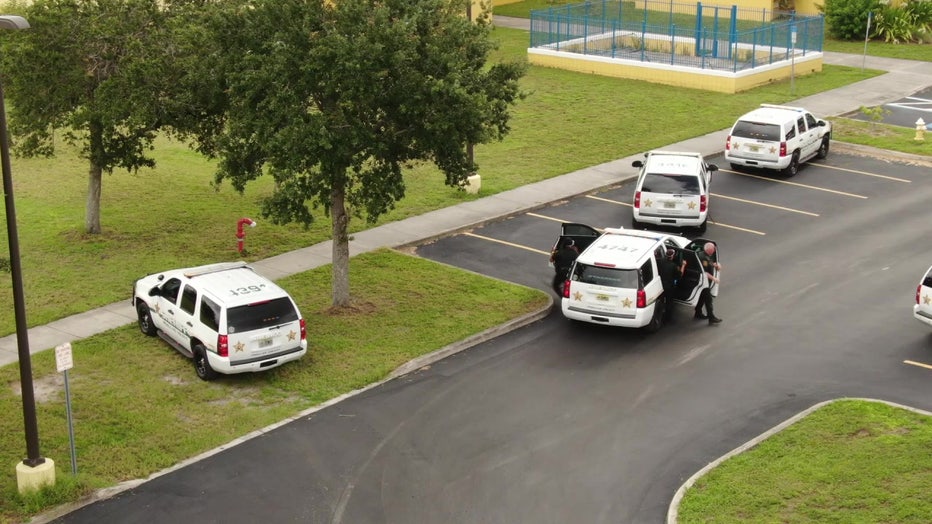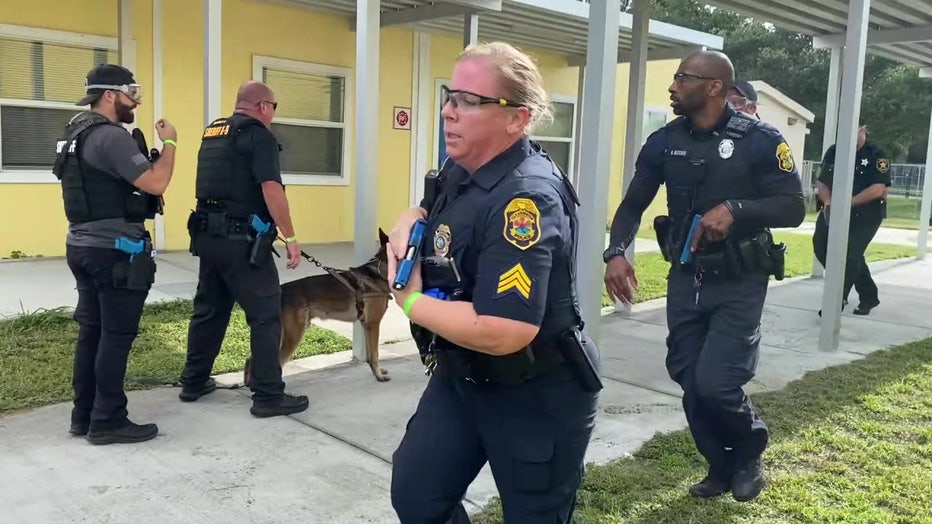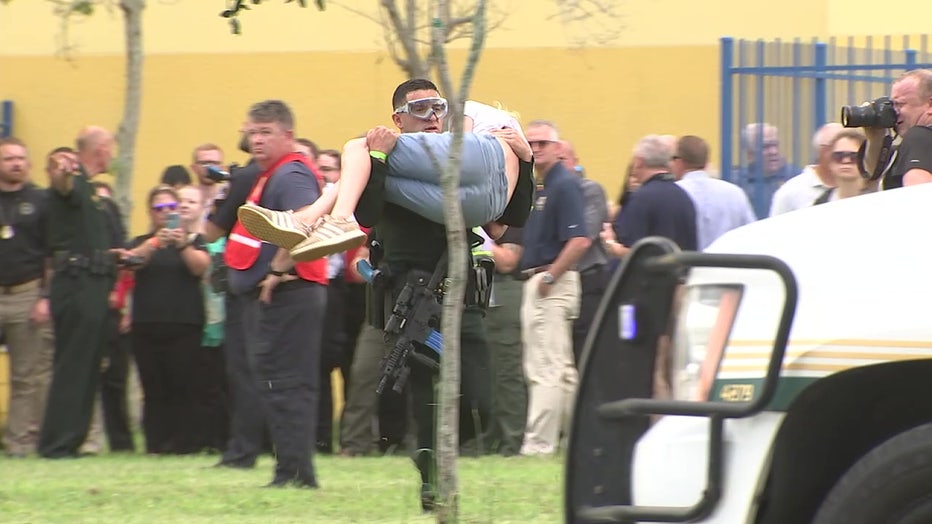Pinellas law enforcement, first responders, school staff take part in mass casualty training

Pinellas agencies hold school shooting training
Mandatory training was held in Pinellas County Wednesday to ensure law enforcement agencies are ready if a school shooting occurs.
ST. PETERSBURG, Fla. - The shooting at Marjory Stoneman Douglas High School not only shattered the lives of dozens of victims and their families, it also shattered the sense of safety and security many across the state felt when sending their kids to school.
In its wake, lawmakers issued a number of reforms designed to prevent another tragedy like it from happening, along with new school safety rules to help protect students and school staff.
One of those new laws includes a requirement for local law enforcement to work with school districts in conducting monthly drills to train for active shooter and hostage situations.
"The unfortunate reality is that it is going to happen again. The question is when and where? The most important question is what are we doing differently than we were doing before to mitigate the harm?" said Pinellas County Sheriff Bob Gualtieri, who was appointed to lead of the Marjory Stoneman Douglas High School Public Safety Commission in 2018.

On a day when Parkland teachers and students provided emotion testimony in shooter Nikolas Cruz’ trial, officials in Pinellas County executed a mass casualty training exercise involving law enforcement and emergency responders from across the county as well as dozens of teachers, school staff and students who volunteered to take part in a drill several years in the making.
"Every agency in this county, the Sheriff’s Office and the police departments, put their personnel through active assailant training but in that active assailant training you’re not injecting into the scenario the stressors that we injected today," said Gualtieri. "It’s important where you’ve got casualties, you’ve got people screaming, you’ve got wounds, you’ve got fire EMS components with rescue task forces trying to get people out."
Gualtieri said he instructed responders and participating school staff to treat Wednesday’s drill as though it were a real emergency. That meant operating at full speed, "victims" with life-like wounds, sirens, squealing tires, and flashes and bangs from imitation firearms.

"You saw the deputies going through windows, you saw the firefighters and EMS personnel with the rescue task forces going through windows and carrying out casualties," said Gualtieri. "You couldn't tell whether that was real or not. It all played out just like what you saw at Uvalde or Stoneman Douglas or Buffalo or wherever, you couldn't tell the difference."
Responding officers knew they were participating in a shooting simulation, but weren’t given further specifics. Officers were tasked with identifying, tracking down, and stopping the shooter or shooters, while protecting and evacuating victims and bystanders.
First responders were called in to treat serious casualties, carry and escort victims to triage areas, and transport the most critical cases by ambulance.

Evacuated "students" and "staff" were then transported to a reunification area in a nearby school where victims waited for their "families." Teachers and staff were tested as well.
"Our staff didn't know what was coming today. We went in surprised so that we could react accordingly with the staff that we have," said Kevin Hendricks, Pinellas County Schools superintendent. "One of the things that we emphasize in all of these scenarios is prevention. We have worked a lot with Sheriff Gualtieri and his team on threat assessments, on see something say something, the Sandy Hook Promise Act, Fortify Florida and using all of those things that we have so that we never get to this point today, but as we know whether it's a school, a ballpark, or a grocery store, we have to be prepared. That's why we're here today."

At one point the "shooter" tried entering a classroom by banging on doors and windows and claiming to be a victim who needed help. The teacher inside neither engaged with her nor allowed her inside, therefore passing the test.
"I think it was a success today. We put stress on the people who are responding. We stressed the system to be able to identify those areas that are good and also areas where there's room for improvement," said Gualtieri.
Gualtieri said he’ll begin to hold his first debriefing meetings on Thursday and hopes to have an after action report compiled within the next 30 days.

